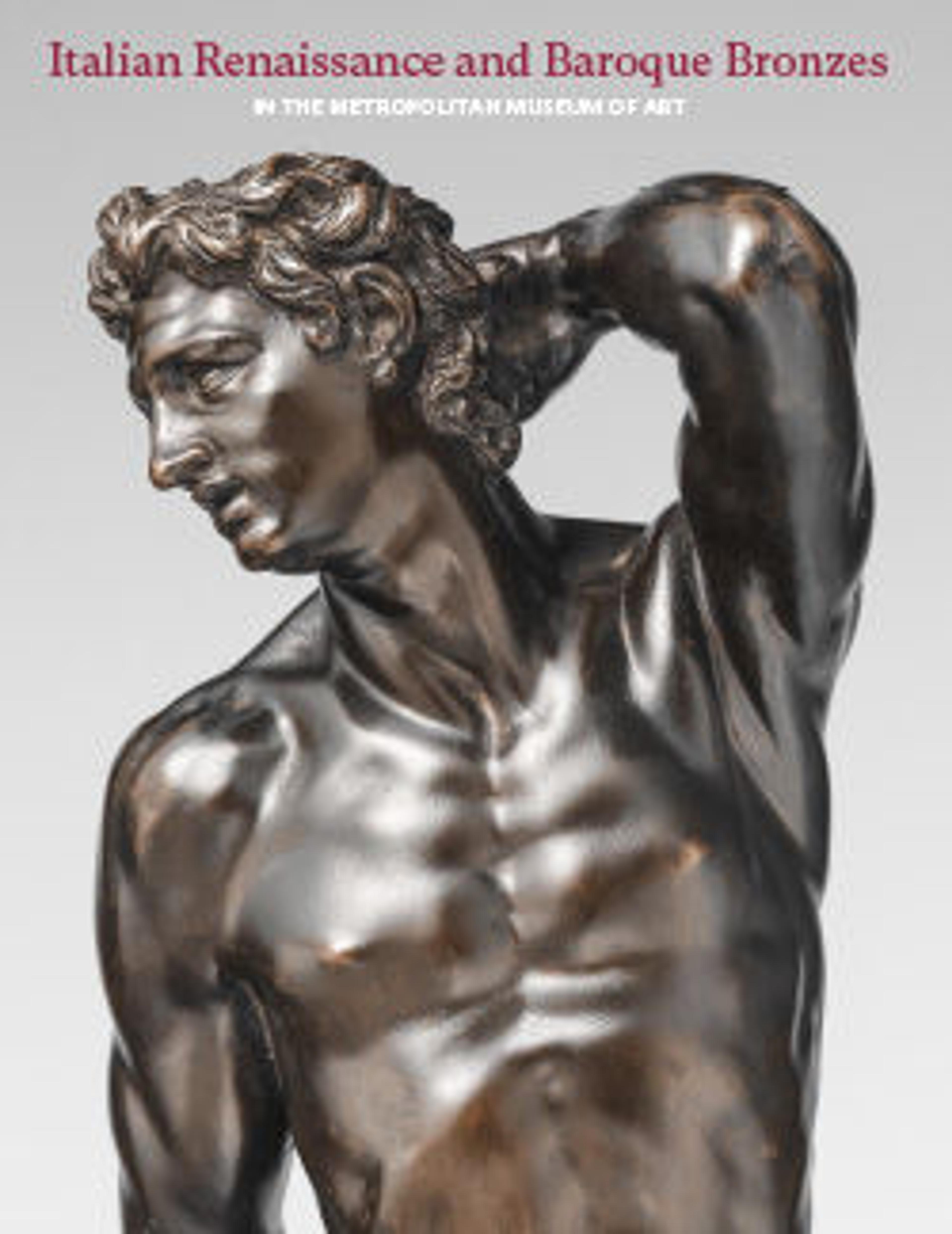Prisoner
This elongated and refined statuette represents a bearded prisoner. He gazes imploringly to the heavens, arms hugging chest, trudging wearily forward, ankles bound in separately cast chains. The shining surface was later gilded. Emphasizing the figure’s elegant contrapposto, James David Draper assigned it to an artist working in the stylistic wake of Guglielmo della Porta, premier master of bronze sculpture in sixteenth-century Rome. Draper identified the subject as Saint John the Baptist in chains, but Nicolas Penny recognized the bronze as one of a series of male and female prisoners in the Ashmolean and the V&A. The Ashmolean has two bronzes—a haggard male and female in distress, the male identical to ours—that come from the Fortnum collection, where they were catalogued as “16th/17th century, probably Florentine.”[1] The V&A has four silver statuettes: two males—one identical to our prisoner, the other a barely clad youth (figs. 181a–b)—and two desperate, partially naked females.[2] The four probably constitute the complete set, and they are evidently meant to be paired: two younger prisoners and two older ones.
Based on the appearances of the younger figures, Penny has ascribed the series to an unidentified Northern goldsmith. The V&A assigns the silvers to Southern Germany circa 1600. Considered on its own, our bronze might be Italian, and in particular Roman, as Draper suggested, but not when placed in the context of the group. The younger overly expressive figures are clearly a product of the other side of the Alps, and it is improbable that the sole Met prisoner was cast after an Italian model. We can say with fair certainty that the figures were produced at the turn of the seicento, perhaps to be mounted on a precious cabinet, but the entire group and its function deserve further investigation.
-FL
Footnotes
(For key to shortened references see bibliography in Allen, Italian Renaissance and Baroque Bronzes in The Metropolitan Museum of Art. NY: The Metropolitan Museum of Art, 2022.)
1. V&A, A.158-1910–161-1910; Ashmolean, WA1888.CDEF.B435–436; see Penny 1992, vol. 2, p. 179.
2. V&A, A.159-1910, A.161-1910; see ibid.
Based on the appearances of the younger figures, Penny has ascribed the series to an unidentified Northern goldsmith. The V&A assigns the silvers to Southern Germany circa 1600. Considered on its own, our bronze might be Italian, and in particular Roman, as Draper suggested, but not when placed in the context of the group. The younger overly expressive figures are clearly a product of the other side of the Alps, and it is improbable that the sole Met prisoner was cast after an Italian model. We can say with fair certainty that the figures were produced at the turn of the seicento, perhaps to be mounted on a precious cabinet, but the entire group and its function deserve further investigation.
-FL
Footnotes
(For key to shortened references see bibliography in Allen, Italian Renaissance and Baroque Bronzes in The Metropolitan Museum of Art. NY: The Metropolitan Museum of Art, 2022.)
1. V&A, A.158-1910–161-1910; Ashmolean, WA1888.CDEF.B435–436; see Penny 1992, vol. 2, p. 179.
2. V&A, A.159-1910, A.161-1910; see ibid.
Artwork Details
- Title:Prisoner
- Date:late 16th–early 17th century
- Culture:Possibly northern Europe
- Medium:Bronze, later fire gilding
- Dimensions:Height: 5 in. (12.7 cm)
- Classification:Sculpture-Bronze
- Credit Line:The Jack and Belle Linsky Collection, 1982
- Object Number:1982.60.103
- Curatorial Department: European Sculpture and Decorative Arts
More Artwork
Research Resources
The Met provides unparalleled resources for research and welcomes an international community of students and scholars. The Met's Open Access API is where creators and researchers can connect to the The Met collection. Open Access data and public domain images are available for unrestricted commercial and noncommercial use without permission or fee.
To request images under copyright and other restrictions, please use this Image Request form.
Feedback
We continue to research and examine historical and cultural context for objects in The Met collection. If you have comments or questions about this object record, please contact us using the form below. The Museum looks forward to receiving your comments.
